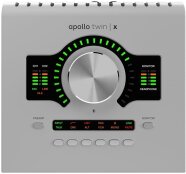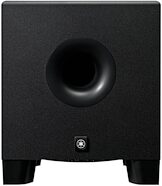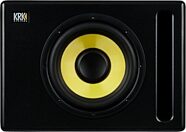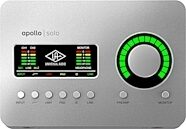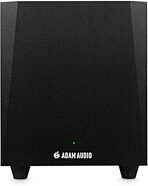Alesis ProLinear 820 DSP Bi-Amplified Studio Monitor (1x8 in.)
No longer available at zZounds
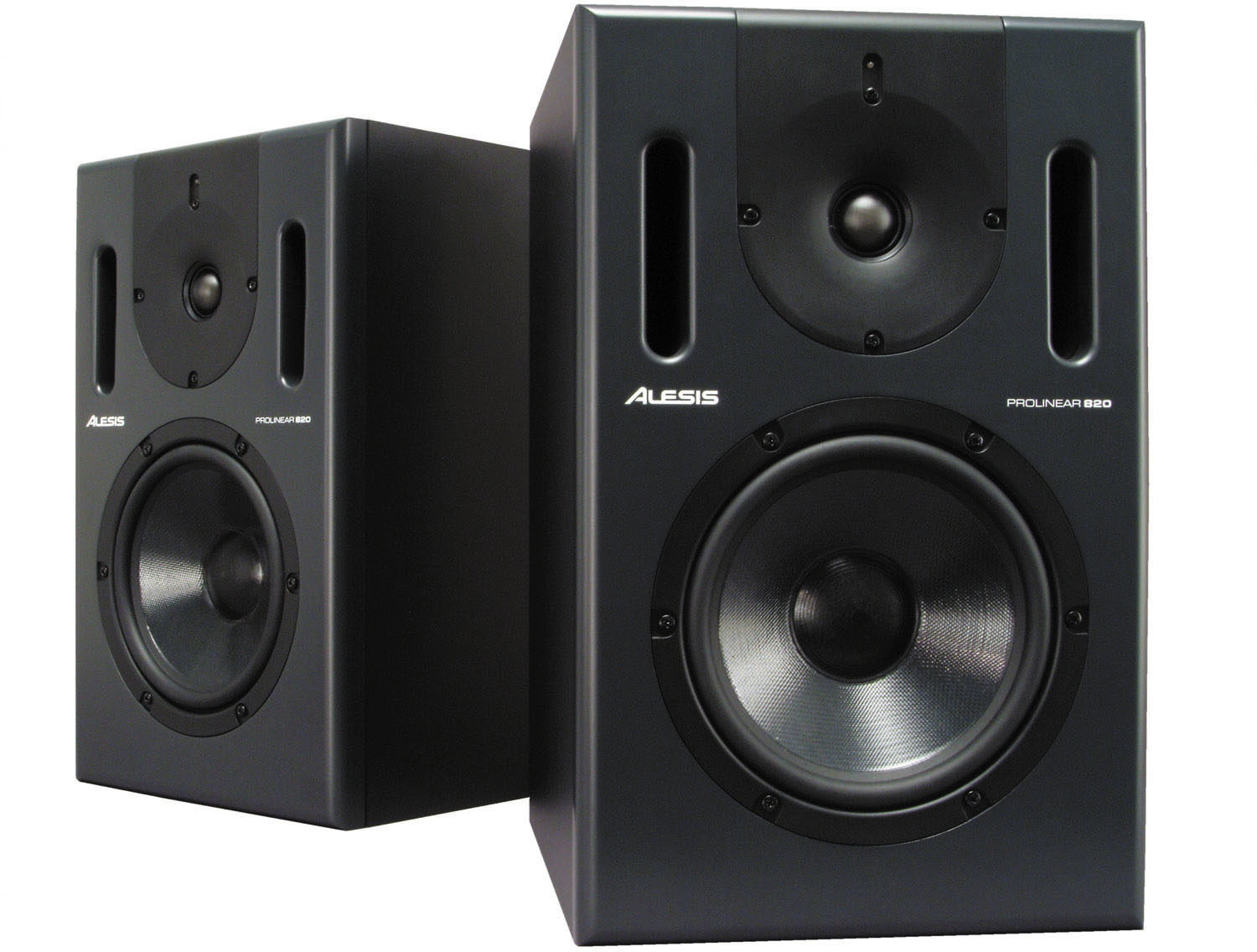
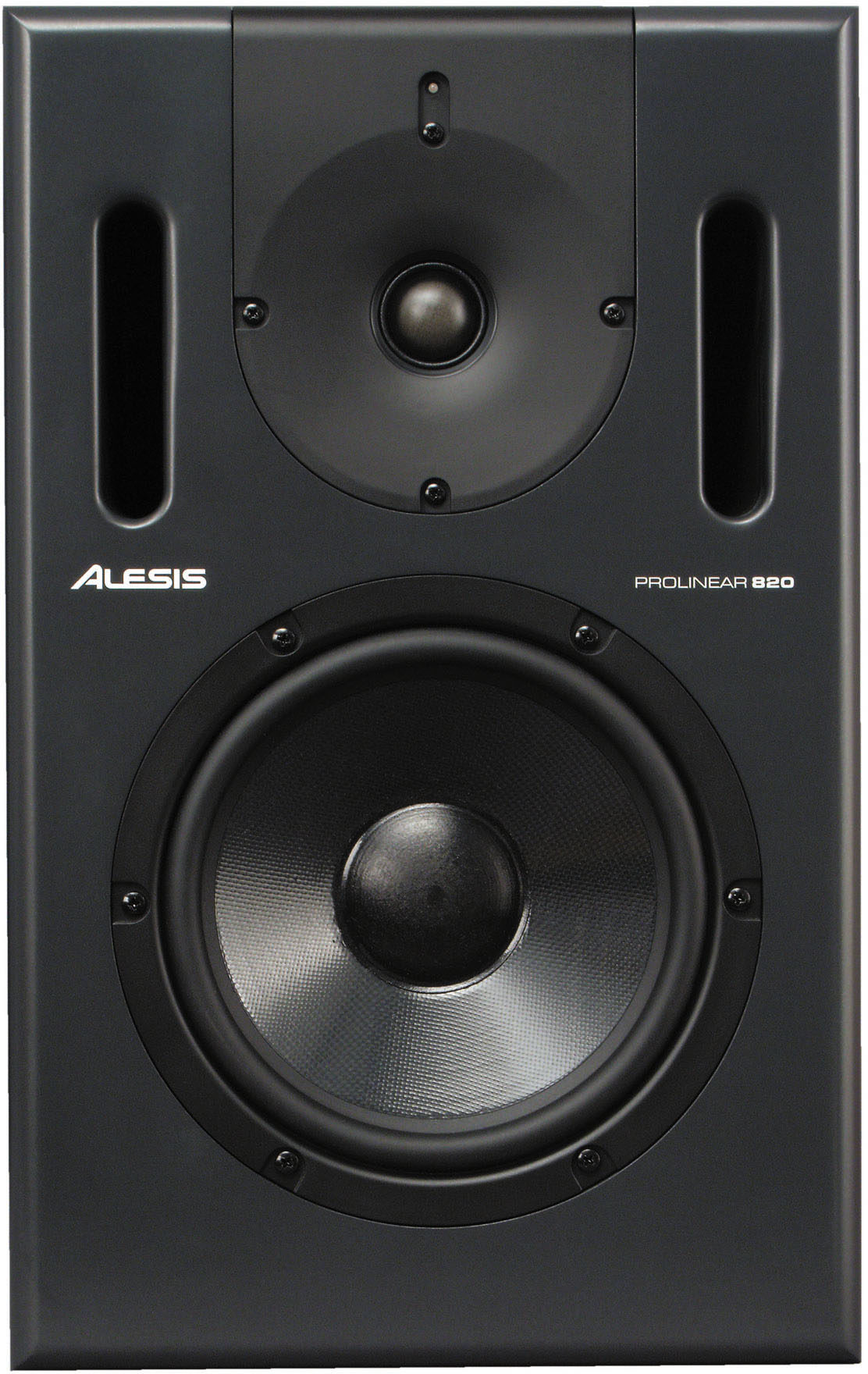
zZounds Gear Experts Say...
8 in. woofer. 1.1 in. tweeter. 50hz - 20kHz frequency response. 120 watts.
Overview
ProLinear 820 -- State of the Art Sound at an Affordable Price
The Alesis ProLinear 820 continues the new standard in near-field monitors set by the ProLinear 720DSP and 820DSP, but at a lower price than the 820DSP. With Alesis custom DSP technology, they have designed a speaker with same sound quality and accuracy as the 820DSP, with the extended bass and greater output over the 720 speakers. This allows the speaker to be used as a mid-field monitor as well as near-field. Clarity, imaging and transient response are truly outstanding. Bass is tight and visceral. The primary difference between the 820 and 820 DSP is the absence of the 4-band parametric EQ control present on the 820 DSP. The 820 has fixed internal crossover and EQ settings that yield the flattest, and most accurate response.
It Begins with the Drivers
Any great speaker design starts with the best drivers, and the Alesis custom drivers are exceptional. The woofer has a cast frame with an 8 in. Kevlar-carbon cone and oversized magnet assembly. The Kevlar-carbon cone has an outstanding stiffness-to-weight ratio to minimize distortion, extend bass response and provide excellent transient response. The magnet assembly provides high linearity and good efficiency. In the 820 cabinet, the woofer is flat down to 39hz (-3db, anechoically) with harmonic distortion typically below .4% above 50hz.
The tweeter is a 28mm silk dome that has a very flat frequency response with a low resonance to reduce harshness. The tweeter… read more is ferrofluid-cooled to provide good power handling and controlled response. Distortion is typically below .3% over its operating range. The tweeter's computer-designed waveguide was optimized for nearfield placement, but provides excellent imaging in most other placements.
Both drivers are shielded and allow the user to place the speakers within a few inches of a computer monitor or television.
The Crossover
With Alesis custom DSP processing, the crossover for the drivers achieves a linearity that is usually unachievable in analog monitors. This allows a smooth transition of the sound between the tweeter and woofer as well as providing proper time domain coherency. In other words, the speaker is as accurate as the drivers. The DSP also allows Alesis to smooth-out the frequency response far more effectively than is normally possible with analog monitors. The response is typically better than + / - 1dB between 100hz and 20Khz.
The Cabinet
Since the 820's cabinet is larger than the 720, heavy bracing was included to minimize any cabinet resonances. In addition, a coating of bitumen was applied to the inner walls to further deaden the cabinet. Venting was optimized to eliminate most of the vent noise, or 'chuffing', that can occur at low bass frequencies.
The Electronics
The ProLinear is bi-amplified with typically 80 watts for the woofer and 40 watts for the tweeter. (In actuality, the woofer and tweeter are both powered at 80 watts, but because of the higher efficiency and lower power content to the tweeter, only about 40 watts is needed to match the 80 watts to the woofer.) The amplifiers are low-distortion, wide-band devices that are self-protected to prevent damage to the drivers. Inputs are either analog XLR or 1/4 in. TRS, so digital mixers and sources are not required. The power supply is a high-efficiency switching supply used to provide optimal power at a low weight; it is also capable of working with a wide range of AC voltages without reconfiguring the speaker. A bi-color LED on the front baffle indicates power-on when green; if the amplifier happens to clip, the LED will turn red.
Conclusion for the ProLinear 820
In keeping with the Alesis track record of providing leading-edge products at an affordable price, the ProLinear 820 gives the user a speaker that is state-of-the-art in performance with the look and feel similar to other Alesis monitors. The ProLinear series of speakers extends the Alesis line of award winning monitors, and will be a worthy addition to the best studio setups. read less
The Alesis ProLinear 820 continues the new standard in near-field monitors set by the ProLinear 720DSP and 820DSP, but at a lower price than the 820DSP. With Alesis custom DSP technology, they have designed a speaker with same sound quality and accuracy as the 820DSP, with the extended bass and greater output over the 720 speakers. This allows the speaker to be used as a mid-field monitor as well as near-field. Clarity, imaging and transient response are truly outstanding. Bass is tight and visceral. The primary difference between the 820 and 820 DSP is the absence of the 4-band parametric EQ control present on the 820 DSP. The 820 has fixed internal crossover and EQ settings that yield the flattest, and most accurate response.
It Begins with the Drivers
Any great speaker design starts with the best drivers, and the Alesis custom drivers are exceptional. The woofer has a cast frame with an 8 in. Kevlar-carbon cone and oversized magnet assembly. The Kevlar-carbon cone has an outstanding stiffness-to-weight ratio to minimize distortion, extend bass response and provide excellent transient response. The magnet assembly provides high linearity and good efficiency. In the 820 cabinet, the woofer is flat down to 39hz (-3db, anechoically) with harmonic distortion typically below .4% above 50hz.
The tweeter is a 28mm silk dome that has a very flat frequency response with a low resonance to reduce harshness. The tweeter… read more is ferrofluid-cooled to provide good power handling and controlled response. Distortion is typically below .3% over its operating range. The tweeter's computer-designed waveguide was optimized for nearfield placement, but provides excellent imaging in most other placements.
Both drivers are shielded and allow the user to place the speakers within a few inches of a computer monitor or television.
The Crossover
With Alesis custom DSP processing, the crossover for the drivers achieves a linearity that is usually unachievable in analog monitors. This allows a smooth transition of the sound between the tweeter and woofer as well as providing proper time domain coherency. In other words, the speaker is as accurate as the drivers. The DSP also allows Alesis to smooth-out the frequency response far more effectively than is normally possible with analog monitors. The response is typically better than + / - 1dB between 100hz and 20Khz.
The Cabinet
Since the 820's cabinet is larger than the 720, heavy bracing was included to minimize any cabinet resonances. In addition, a coating of bitumen was applied to the inner walls to further deaden the cabinet. Venting was optimized to eliminate most of the vent noise, or 'chuffing', that can occur at low bass frequencies.
The Electronics
The ProLinear is bi-amplified with typically 80 watts for the woofer and 40 watts for the tweeter. (In actuality, the woofer and tweeter are both powered at 80 watts, but because of the higher efficiency and lower power content to the tweeter, only about 40 watts is needed to match the 80 watts to the woofer.) The amplifiers are low-distortion, wide-band devices that are self-protected to prevent damage to the drivers. Inputs are either analog XLR or 1/4 in. TRS, so digital mixers and sources are not required. The power supply is a high-efficiency switching supply used to provide optimal power at a low weight; it is also capable of working with a wide range of AC voltages without reconfiguring the speaker. A bi-color LED on the front baffle indicates power-on when green; if the amplifier happens to clip, the LED will turn red.
Conclusion for the ProLinear 820
In keeping with the Alesis track record of providing leading-edge products at an affordable price, the ProLinear 820 gives the user a speaker that is state-of-the-art in performance with the look and feel similar to other Alesis monitors. The ProLinear series of speakers extends the Alesis line of award winning monitors, and will be a worthy addition to the best studio setups. read less
Specs
Input:
-- Nominal input level: +4dBu (-15dBFS).
-- Maximum input level: +20dBu (7.0 Vrms)
-- Input impedance: 10kΩ
Output:
-- Sound Pressure Level (SPL): ~113db at 1 meter at max input below clipping.
-- Low Frequency (LF) power: 80 watts RMS, ~120 watts peak.
-- High Frequency (HF) power: 40 watts RMS typical, ~120 watts peak.
-- Frequency response: 50hz -- 20kHz + / - 1.5dB. Bass level -3dB @ 39hz typical,
-- Signal To Noise ratio: > 90 dB A-weighted, analog in to analog out.
Power Requirements:
-- Input voltage: 100v - 230v
-- Input frequency: 47 - 63 Hz
-- Power consumption: 20 W idle, 130 W typical at maximum volume
Environmental Requirements:
-- Temperature range: 0-40 degrees C. Relative humidity (non-condensing): 30-85%.
Cabling Requirements:
-- Mixer to Speaker: Balanced or unbalanced, shielded; XLR or 1/4 in. TRS connector.
Mechanicals:
-- Size (HxWxD): 17 in. x 11 in. x 13.5 in. (440mm x 280mm x 3405mm)
-- Weight: 32lbs (14.6kg)
-- Nominal input level: +4dBu (-15dBFS).
-- Maximum input level: +20dBu (7.0 Vrms)
-- Input impedance: 10kΩ
Output:
-- Sound Pressure Level (SPL): ~113db at 1 meter at max input below clipping.
-- Low Frequency (LF) power: 80 watts RMS, ~120 watts peak.
-- High Frequency (HF) power: 40 watts RMS typical, ~120 watts peak.
-- Frequency response: 50hz -- 20kHz + / - 1.5dB. Bass level -3dB @ 39hz typical,
-- Signal To Noise ratio: > 90 dB A-weighted, analog in to analog out.
Power Requirements:
-- Input voltage: 100v - 230v
-- Input frequency: 47 - 63 Hz
-- Power consumption: 20 W idle, 130 W typical at maximum volume
Environmental Requirements:
-- Temperature range: 0-40 degrees C. Relative humidity (non-condensing): 30-85%.
Cabling Requirements:
-- Mixer to Speaker: Balanced or unbalanced, shielded; XLR or 1/4 in. TRS connector.
Mechanicals:
-- Size (HxWxD): 17 in. x 11 in. x 13.5 in. (440mm x 280mm x 3405mm)
-- Weight: 32lbs (14.6kg)
Documents and Manuals
For support or warranty questions, please contact the manufacturer:
Phone: 401-658-5760
Web: https://support.alesis.com
Phone: 401-658-5760
Web: https://support.alesis.com
Reviews
Reviewers gave this product an overall rating of 5 out of 5 stars.
(4 ratings)
Submitted September 10, 2006 by a customer from hotmail.com
"I've found my thrill..."
Verified Customer
zZounds has verified that this reviewer made a purchase from us.
I've been recording professionally for 25 years, and I think these are "it". As long as they are still making noise, I'll be happy with them. Good results are... well, good results.
Sound
This is an excellent monitoring option; inexpensive and "customizeable". My mixes are now very transportable... not so with previous systems from soffit mounted to Yamaha NS-10s... these are the "ticket"!
Features
It's got editable emulations of other popular playback monitors. What more can I say?
Ease of Use
I plugged them in; they worked. That's about it.
Quality
Very attractive finish. Solid look and feel.
Value
I would expect these to cost at least twice as much.
Manufacturer Support
One monitor was silent and had a failure message in the readout about 5.5 months after first use. I contacted Alesis service through e-mail. They got back by phone, and sent me a new one quickly.
The Wow Factor
Well... the digial readout is cool. And clients are excited to hear their mixes on different playback systems at the touch of a button (or computer screen) without moving an inch! Big "Wow" factor.
Musical Background:
Recording Engineer
Musical Style:
All
1 of 1 people (100%) people found this review helpful. Did you?
Thanks for your opinion!
No longer available at zZounds
In most cases, a product is unavailable because it has been discontinued by the manufacturer
This is a carousel with product cards. Use the previous and next buttons to navigate.



